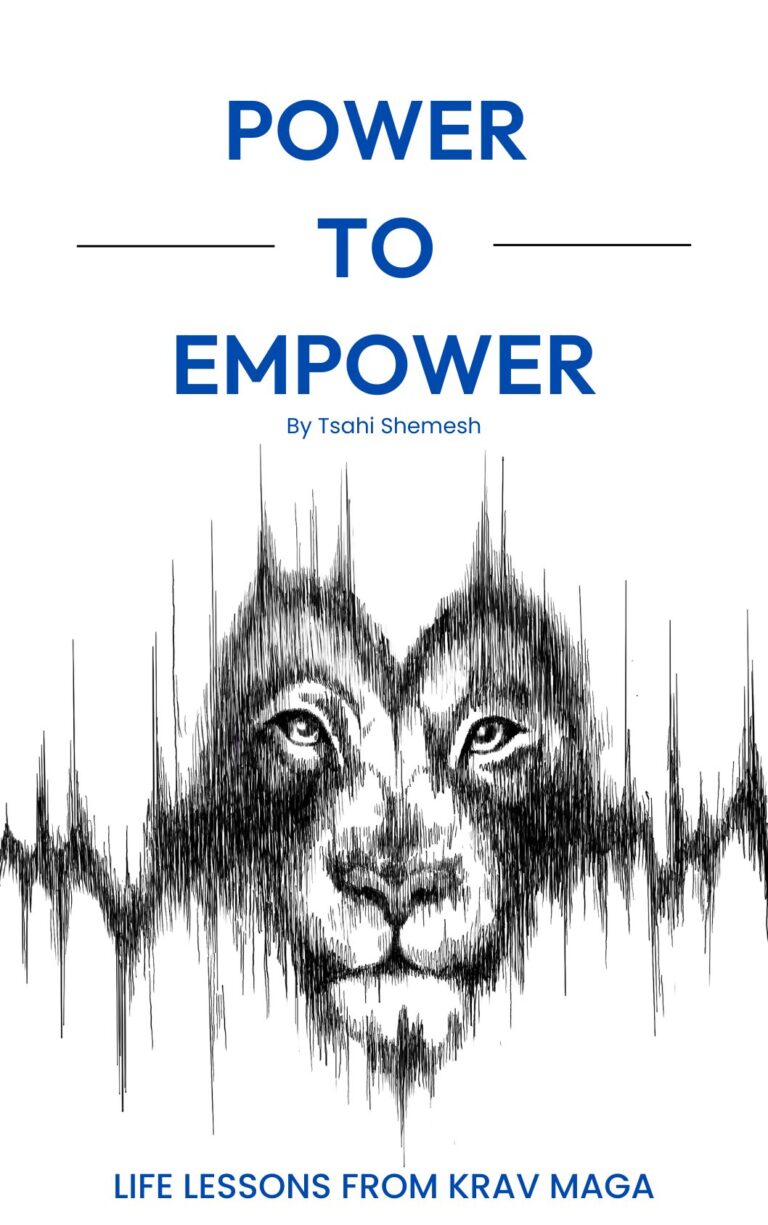How to Make Tough Decisions and Manage Risk in Self-Defense Scenarios
In life, we encounter decisions with varying levels of risk and consequence. Whether it’s a physical confrontation, an emotional exchange, or a personal choice, we must assess the potential outcomes and determine the “acceptable” sacrifice to achieve our goals based on the specific situation. In my teaching, I emphasize the concept of “acceptable damage,” which refers to the calculated sacrifices one is willing to endure. It involves understanding the potential harm—physical, emotional, or moral—and making a decision on what price is worth paying to ensure safety or resolution.
Krav Maga, as a system, emphasizes efficiency and survival. It teaches students that in any confrontation, especially physical, the ultimate goal is to end the threat quickly and decisively, with as little harm to oneself as possible. However, the reality is that any conflict, whether a street fight or a personal disagreement, will leave a mark. Acceptable damage is about recognizing this inevitability and being prepared to make calculated decisions in conflict.
The techniques we teach are not guarantees of immunity from harm. Conflict, especially dangerous situations, always carry an element of uncertainty. You can never be 100% sure that what you do will work perfectly. At that moment, you have to decide: How do you act? Do you attempt the technique, knowing there’s a risk, or do you do nothing, knowing there will still be consequences? The simplest way to decide is to think about the possible outcomes: If the damage of trying is less than the damage of doing nothing, you act. If it’s more, then you reconsider.
1. Defining Acceptable Damage
Acceptable damage involves understanding that any conflict, whether violent or otherwise, consists of a trade-off. In a self-defense scenario, this could mean accepting minor injuries in order to escape a life-threatening attack. An emotional confrontation could involve enduring a blow to one’s pride or ego in exchange for de-escalating a tense situation. The key is not to avoid all damage—that is rarely possible—but to decide what is “acceptable” within the context.
The phrase “If someone comes to kill you, rise and kill him first” comes from Sanhedrin 72a in the Talmud. This is not a promotion of violence, this principle acknowledges the harsh reality that in a life-threatening situation, decisive and preemptive action may be necessary to protect oneself and ensure survival. In life-threatening situations, the cost of inaction—allowing oneself to be harmed or even killed—is far too great. The acceptable damage in such a scenario might be the moral and emotional weight of causing harm to another human being or enduring a legal and psychological aftermath. However, this is deemed acceptable when the alternative is one’s death or severe injury.
But beyond the life-and-death situations, you also have to weigh other kinds of damage. There’s always emotional, physical, or moral harm to consider. In any situation, you must ask: Am I allowing the damage to fall on me or someone I love? If damage is inevitable, is it better for others to get hurt while I stay safe? The answer depends on context, stakes, and what you are willing to live with.
For example, if I’m in a difficult situation with my kids by my side, the acceptable damage is clear—If I must fight, I accept the result of me getting hurt, but not them. But if they aren’t with me, the calculation changes. I have more flexibility in my willingness to endure because the stakes are different.
2. Factors in Determining Acceptable Damage
Determining acceptable damage is not a universal calculation; it depends on several factors that vary from person to person and situation to situation. Some of the primary factors include:
- Context and Stakes: The situation’s stakes heavily influence what damage is acceptable. In a life-or-death scenario, more extreme actions are justifiable. If the threat is less severe, like a verbal argument, the stakes are lower, and the damage one should be willing to accept decreases accordingly. For instance, in a street fight where your safety or the safety of your loved ones is at risk, acceptable damage might involve harming the attacker. In contrast, in an argument with a colleague, the acceptable damage may be a bruised ego rather than escalating to an aggressive confrontation.
- Moral and Emotional Consequences: Even in situations where physical harm is necessary, one must consider the long-term emotional and moral impact of their actions. For example, a parent defending their children may need to resort to violence, but the emotional trauma of such actions, especially if witnessed by the children, is something that must be weighed carefully. Acceptable damage, in this case, could be emotional distress for the sake of immediate safety.
If you’re in a position where harm must be done, and the risk to yourself or others is too great to avoid, then you need to ask: What kind of emotional weight will I carry? Hurting others in self-defense comes with consequences, and the emotional fallout can be a burden in itself. But I shall remind you that this weight is worth carrying to preserve personal safety.
- Physical Consequences: In any confrontation, there are physical consequences to consider. How much injury are you willing to sustain to end a conflict? Are you willing to risk long-term health issues or disabilities? In self-defense, for example, avoiding injury altogether might not be possible, but minimizing harm—by using techniques that are efficient and do not expose you to further risk—helps determine the acceptable damage you can bear.
The physical consequences might be immediate—like an injury—or long-term, like disability. No one wants to get hurt, but sometimes, in the face of danger, the acceptable damage is taking the hit to ensure you survive. There’s no avoiding the reality that there will be pain, but deciding how much you can endure is a critical part of self-defense.
- Legal and Social Repercussions: Particularly in self-defense situations, one must also consider the legal consequences of their actions. Even if you are justified in defending yourself, there may be legal battles that follow. The concept of acceptable damage extends beyond the immediate conflict and into the aftermath, asking, “What are you willing to endure in the long term?” Sometimes, avoiding the fight and walking away might cause emotional damage to one’s ego, but it could be the smarter option to avoid unnecessary legal entanglements.
3. Making Calculated Decisions Under Pressure
Acceptable damage is ultimately about making quick, calculated decisions in high-pressure situations. This is where the training of Krav Maga becomes essential—not just for physical techniques but for the mindset it develops. In the heat of the moment, when stress levels are high and emotions are flaring, the ability to quickly assess your options and calculate the acceptable damage becomes crucial.
In Power to Empower, a scenario is presented where a man with children must defend himself in an elevator. In such an enclosed space, there is no escape, and the fight becomes unavoidable. Here, the acceptable damage is clear—doing whatever it takes to protect his children, even if that means incapacitating the attacker completely. However, in an open street with a clear exit, the acceptable damage changes. Here, retreating with his children might be the better option, accepting a bruised ego as the cost of safety.
In any high-pressure situation, the mind must work quickly to assess:
- What is the immediate threat?
- What are my options for minimizing damage to myself and others?
- What are the potential consequences of my actions, now and later?
- What can I live with?
The ability to quickly assess these variables and make decisions is what separates those who are prepared for conflict from those who are not. Krav Maga’s emphasis on rapid decision-making under pressure directly relates to this process of determining acceptable damage. You always have to ask: What’s the risk of doing something versus doing nothing? How much damage can you endure, and how much damage are you willing to cause?
4. Acceptable Damage in Everyday Life
The concept of acceptable damage extends far beyond physical confrontations. In everyday life, we make decisions that involve varying levels of risk and consequence. Whether it’s choosing to speak up in a tense meeting, ending a toxic relationship, or taking a financial risk to pursue a dream, we are constantly calculating what we are willing to sacrifice to achieve our goals.
In these situations, acceptable damage might look like:
- Career Risk: Taking a hit to your reputation or job security to stand up for what you believe is right.
- Emotional Sacrifice: Enduring short-term emotional pain (such as ending a relationship) for long-term emotional well-being.
- Financial Risk: Accepting a potential financial loss in pursuit of a greater gain or personal satisfaction.
Ultimately, acceptable damage is about understanding the cost of action versus inaction. Sometimes, the damage of doing nothing—remaining stagnant, silent, or passive—is far greater than the damage of taking decisive action. As Imi Lichtenfeld taught, sometimes you must “rise and kill first”—act decisively before the consequences of inaction become too great.
Acceptable damage” is a concept rooted in practical self-defense, but it applies to every aspect of life, like business, conflict resolution, and decision-making, where calculated risks and sacrifices are necessary to achieve meaningful outcomes. Whether the conflict is physical or emotional, it will always leave a mark. The key is determining what kind of damage you’re willing to accept to protect what matters most or reach your goals.
You can’t avoid all harm when danger arises—whether it affects you or others or takes an emotional toll—but with the right mindset, training, and discipline, you can learn to assess the risks, make smart decisions, and become stronger and more resilient!
Do something amazing,
Tsahi Shemesh
Founder & CEO
Krav Maga Experts


1 comment